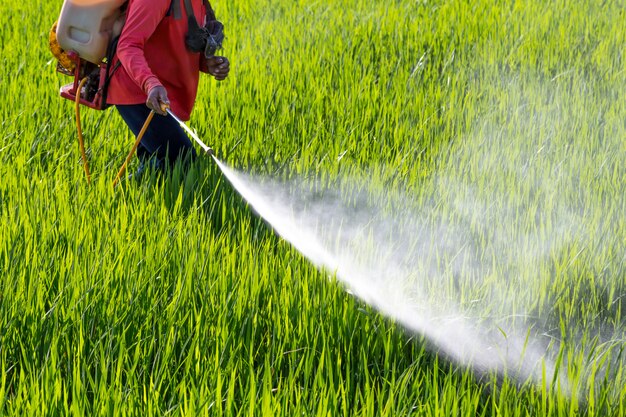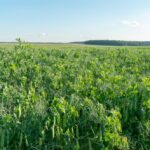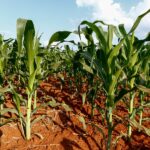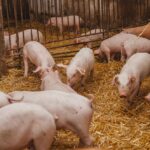Pests and diseases pose significant threats to agricultural productivity, often leading to reduced yields and economic losses. Effective crop protection is crucial for sustainable farming, and the use of modern equipment has transformed the way farmers combat these challenges. Here’s a guide on how to protect your crops from pests and diseases using specialized equipment.
Step 1: Identify Common Pests and Diseases
Before choosing equipment, identify the pests and diseases most prevalent in your region and the crops you grow. Common issues include insect infestations, fungal infections, bacterial diseases, and viral pathogens. Understanding the threats helps you select the right tools and strategies for protection.
Step 2: Invest in Monitoring and Detection Equipment
Early detection is critical for effective pest and disease management. Use equipment that monitors crop health and identifies potential threats:
- Crop Scouting Drones: Drones equipped with cameras and sensors can capture aerial images to detect pest infestations or disease outbreaks. Thermal imaging can identify stressed plants before symptoms become visible.
- Trap Systems: Pheromone traps and sticky traps are effective for monitoring insect populations. These traps can alert you to the presence of specific pests.
- IoT Sensors: Soil and environmental sensors monitor factors like humidity, temperature, and moisture, which can influence pest and disease activity.
Step 3: Use Sprayers for Targeted Application
Sprayers are essential for applying pesticides, fungicides, and herbicides efficiently. Advanced spraying equipment ensures precise application, reducing chemical waste and environmental impact:
- Knapsack Sprayers: Ideal for small-scale farms or localized treatment. They are lightweight and easy to operate.
- Boom Sprayers: Used in larger fields, these sprayers cover wide areas and ensure even distribution of chemicals.
- Drone Sprayers: For modern farms, drones offer a quick and efficient way to spray crops, especially in hard-to-reach areas or uneven terrain.
Step 4: Deploy Physical Barriers and Netting
Physical barriers are a non-chemical approach to crop protection. They are particularly effective against pests such as insects, birds, and larger animals:
- Insect Netting: Fine mesh netting prevents insects from reaching crops while allowing sunlight and airflow.
- Row Covers: Lightweight covers shield young plants from pests and harsh weather conditions.
- Electric Fencing: Protects crops from larger pests like deer and wild boars.
Step 5: Use Thermal and UV Equipment for Sterilization
Modern farms can benefit from equipment that uses heat or ultraviolet (UV) light to sterilize soil and crops, reducing disease risks:
- Flame Weeders: Use controlled flames to kill weeds and eliminate pathogens on the soil surface.
- UV Sterilization Lamps: Effective in greenhouses to reduce the spread of fungal and bacterial diseases.
Step 6: Install Irrigation Systems with Pest Control Features
Irrigation systems can double as pest control tools by delivering pesticides or other treatments directly to the soil or crops:
- Drip Irrigation with Fertigation Units: Delivers pesticides or fungicides along with water, ensuring targeted application.
- Sprinkler Systems with Additives: Sprinklers can distribute pest deterrents while irrigating crops.
Step 7: Opt for Mechanical Pest Control
Mechanical equipment provides an environmentally friendly alternative to chemical pest control:
- Rotary Tillers: Disrupt pest habitats in the soil by tilling the land.
- Insect Vacuums: Remove pests like aphids, whiteflies, or beetles from crops without using chemicals.
Step 8: Practice Regular Equipment Maintenance
Protecting your crops effectively depends on the proper functioning of your equipment. Regularly inspect and maintain all tools to ensure optimal performance. Clean sprayers and drones after each use to prevent chemical buildup, and check for wear and tear on physical barriers.
Step 9: Integrate Data and Technology
Combine your equipment with digital tools for maximum efficiency:
- Farm Management Software: Track pest and disease data, plan treatments, and monitor outcomes.
- AI-Powered Analytics: Use data from drones, sensors, and traps to predict pest or disease outbreaks and take preventive measures.
Step 10: Adopt Integrated Pest Management (IPM)
Equipment alone may not suffice; integrate these tools into a broader pest management strategy. IPM combines cultural, biological, and mechanical methods to reduce reliance on chemicals while maintaining crop health. For example, use pheromone traps alongside crop rotation and resistant crop varieties.
Benefits of Using Equipment for Crop Protection
- Efficiency: Modern tools save time and labor compared to manual methods.
- Precision: Advanced equipment ensures targeted applications, minimizing chemical use.
- Sustainability: Non-chemical approaches and reduced pesticide use promote environmental health.
- Cost Savings: Early detection and efficient control methods prevent costly damage to crops.
Protecting crops from pests and diseases is a critical component of successful farming. With the right equipment, farmers can manage threats efficiently, reduce crop losses, and enhance productivity while minimizing environmental impact. By integrating tools such as drones, sprayers, and IoT sensors into a well-rounded pest management strategy, you can safeguard your farm and contribute to sustainable agriculture.
Join 'Farmers Mag' WhatsApp Channel
Get the latest Farming news and tips delivered straight to your WhatsApp
CLICK HERE TO JOIN






